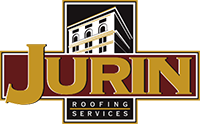Roofing Products – Making the Grade…Not all Roofing Products are Created Equal
Many people pride themselves on finding the best product for the best deal possible. Honestly, who DOESN’T like getting a deal? The problem comes when your knowledge of a product or trade is minimal and research is limited, such as roofing products. Being able to decipher which way to go can be a bit difficult.
It’s important to have an understanding, especially in commercial applications, which roofing products are best and to not let a lower price point be your only guide.

In this article we will cover some roofing components that are maybe not as highly stressed as the system itself but are basically as, if not more, important than just what color roof you’ll be getting. As they say, the devil is in the details, and the details certainly are an important part of your roof as a whole.
How do you go about comparing roofing products and discerning if Product A or Product B is the better deal for what you’re getting?
The short answer is to ask questions and ask for specifics. I’ll focus on roofing products for my example but this does apply to any product or service you are shopping for.
Ask Your Roofing Contractor
Having an open dialogue with your contractor is the easiest way to find out what roofing products you’re getting. It allows you the opportunity to extract more information so you can make an informed comparison and decision.
Anyone who writes or speaks in a vague manner might be trying to hide that they are providing inferior roofing products. As a result you might not be getting the performance you are looking for.
Here are some of the more common areas where inferior roofing products might be substituted but may not be called out.
Metal Flashing/Metal Edging
The perimeter of a commercial roof is often terminated by installing a metal flashing – either a metal edge or metal coping. A commercial grade metal would be either a 24 gauge steel or an .040 aluminum or better. A quality contractor will also install a continuous metal cleat under the metal flashing. This helps provide better wind uplift protection.

When lighter “residential” grade materials are used the final product doesn’t hold up as well against the elements and stresses that come with commercial use. Contractors that use these materials also seem to skimp on enhancements like the cleat. As a result you may need to replace and repair these roofing products more often.

These photos show the issues that come along with cheaper roofing products. Because there is no cleat and due to the fact that the metal is lighter gauge it can easily be bent up. Furthermore it was top fastened without any wood nailer below. Consequently the top fastening has created a low spot that allows water to pool and ultimately results in roof leaks at each fastener.
Gutters
There are many different types of gutters but the more common are either the 5 or 6 inch “K” gutter fabricated in .032 aluminum. This is usually installed for a residential use and is therefore capable of handling watershed levels found in this setting. The downspouts normally installed here are 3 inch by 4 inch in size.
Almost all commercial settings should have a “commercial” grade gutter system. This is usually at least a 7 inch box gutter (or larger) fabricated in at least 24 gauge steel. The downspouts are usually either 3″x4″ or 4″x5″ depending on the amount of water they need to handle. The use of non-commercial grade roofing products on a commercial building will only result in unnecessary repair costs later.


Commercial grade gutters can withstand the abuse that comes along with a commercial building setting, be it maintenance contractors and ladders or higher watershed levels, due to the materials used and overall design.
Insulation
Some of the more inexpensive roofing products used for new insulation are wood fiberboard or EPS. Wood fiberboard is an engineered wood product made of wood fibers that are compressed to ½ inch thick. While it may seem tempting to save money by using wood fiberboard, this product does not perform well once it comes in contact with moisture.
EPS is another lower cost option but performs slightly better than wood fiberboard. EPS (Expanded Polystyrene) is a closed-cell foam insulation board similar to the rigid packing material used for shipping applications. Both EPS and wood fiberboard roofing products contain relatively low R-value per inch, however EPS is not as susceptible to water infiltration.

The better product, and the one we recommend to our clients, is polyisocyanurate insulation. Polyisocyanurate is also a closed-cell rigid foam board but carries one of the highest per inch R-value for insulation boards. Polyisocyanurate is also available in a ½ inch thick high density board like wood fiberboard yet outperforms both wood fiberboard and EPS.

Penetration Flashings
Too often I find that contractors have installed improper flashing material around roof-top penetrations. This can either be done during a new installation or for a repair. A building owner should know exactly what roofing products the contractor intends to install and, furthermore, whether or not they are compatible with their roof.
A quality contractor won’t install a residential pipe boot on a flat roof. It’s just not what it was designed for. The same quality contractor will also make sure that all his repair materials are compatible with the roof system.

Roof cement and fabric are not universal roof repair materials. Improper repair materials can actually harm your roof and put your roof warranty at risk. Roof cement is incompatible with EPDM and, as a result, its use on EPDM will break down the membrane.
Most of the major manufacturers make preformed flashing materials but also field flashing can be performed by hand using the right roofing products and the correct techniques.
Roof Repair Materials
Another commonly overlooked area where inferior roofing products are utilized is for roof repairs. The photo to the right shows the use of residential ice and water shield and roof cement as repair materials on an EPDM roof.

Not only are these roofing products unsuitable for EPDM roof repairs, but you can also run the risk of voiding your roof warranty. Also beware of tenant-hired contractors who may be utilizing non-commercial or inferior roofing products.
At the end of the day how a proposal is written and asking the right questions are very important. Unless you have found a quality, reputable contractor that you can trust, ask for 3 or 4 proposals and compare the language of each. Look for the specifics. If they aren’t all there, ask for them.
Don’t settle for less than correct. Remember that cheaper roofing products now could very well cost you much more in the end. It costs more than double to have the same project done twice if it wasn’t done right the first time.






